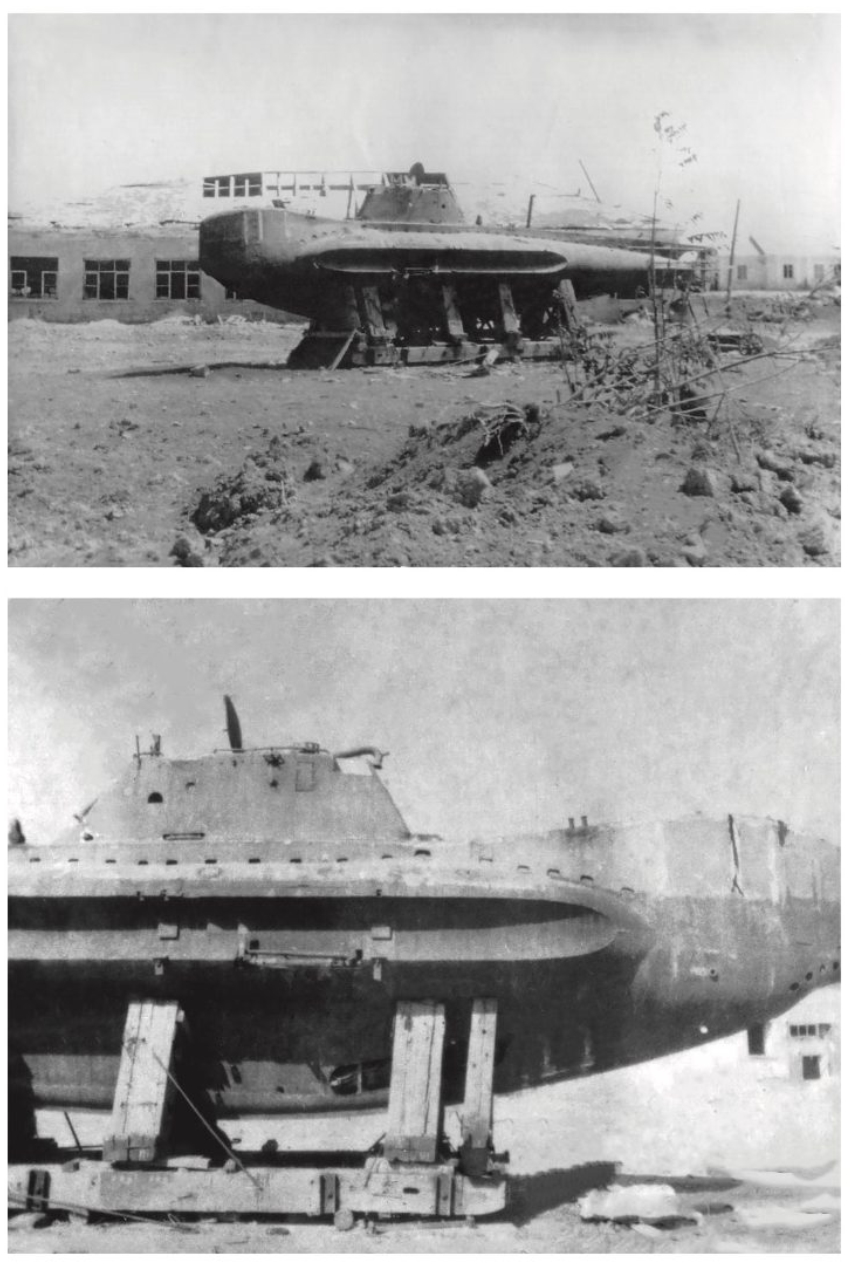
| Name | Yard № | Laid Down | Launched | Commissioned | Note |
| M-401 | №135 | 16.11.1939 | 1.06.1941 | 1946 |
General characteristics – Project 95
| Displacement (tons): | |
| Surfaced: | 102 |
| Submerged: | 140 |
| Dimensions (m): | |
| Length: | 37,3 |
| Beam: | 3,3 |
| Draught: | 1,73 |
| Speed (knots): | |
| Surfaced: | 23 |
| Submerged: | 14,5 |
| Range: | |
| Surfaced: | 900 nmi (14 knots) |
| Under snorkel: | – |
| Submerged: | 350 nmi (4 уз) |
| Diving depth (m): | |
| Operational: | 50 |
| Maximum: | 60 |
| Endurance (days): | 5 |
| Propulsion: | 2×900 hp diesels, 2 fixed pitch propellers |
| Armament: | 2 533 mm bow torpedo tubes (2 torpedoes) 1×1 45 mm 21K |
| Electronics: | – |
| Complement: | 9 |
In the Soviet Union the concept of closed-cycle propulsion-called “single-drive” or “unified”- was initiated earlier than in the West and would survive longer. Investigations into submarine power plants capable of providing high underwater speed had been carried out in tsarist Russia and after that in the USSR over a lengthy period. These efforts were expanded in the 1930s, focusing primarily on the use of liquid oxygen to permit diesel engine operation underwater.
At the end of 1944 experiments were carried out in the use of hydrogen-peroxide, among other oxygen carrying compositions, to oxidize fuel in the fuel chamber of a steam generator. The results of these experiments were not met with great enthusiasm by submarine designers because of low hydrogen peroxide concentration and problems with the suggested technical approach.
In 1938 development began on Project 95, a small, 102-ton (submerged), 1221/3-foot (37.3-m) submarine employing solid lime as a chemical absorber for carbon dioxide exhaust. This absorber permitted the exhaust to be reused for the oxidation of the fuel (i. e., combustion) while the craft operated submerged with a diesel engine. This system used two lightweight diesel engines that could be employed for both surface and submerged propulsion.
Under chief designer Abram S. Kassatsier, Project 95 was begun in a design bureau operated by the NKVD-the Soviet secret police and intelligence agency. Construction was undertaken at the Sudomekh shipyard in Leningrad. After launching, the unfinished submarine was transported via the extensive inland waterways to the Krasnoye Sormovo shipyard in the inland city of Gor’kiy; in November 1941 she was transported to Baku on the Caspian Sea. The submarine was completed in October 1944. During subsequent trials in the Caspian Sea through June 1945, the submarine, assigned the tactical number M-401, suffered several fires. The chief designer of her propulsion plant, V. S. Dmitrievskiy, was killed in one of the accidents. After the war, in 1946, responsibility for Project 95 was transferred to the TsKB-18 design bureau in Leningrad.
With the end of the war in Europe in May 1945, several groups of Soviet engineers-among them submarine designers and builders-were sent into Germany to master the German experience in military-related industries. All of the German shipyards involved in closed-cycle submarine construction were located in areas occupied by British or American troops.
In Dresden, at the Bruener-Kanis-Reder firm, which built the larger Walter turbines, Soviet engineers saw a turbine designed for submarine use. It had a power rating of 7,500 horsepower, with steam-gas as the working medium. The Soviet engineers were directed to the town of Blankenburg to obtain more detailed information. There they discovered the Glück auf bureau, which had played an important role in design of the Type XXVI submarine with Walter propulsion. Documents on submarine design as well as their Walter turbines were found.
With the help of the Soviet military commandant of the town, about 15 former employees of the Glück auf bureau were located, all of whom had important roles in development of the Walter submarines. The Germans were directed to make a report on the work of their bureau and on related submarine designs.
The Soviet reaction to this “find” was to establish a Soviet design bureau in Germany and to invite German specialists to participate. This plan also envisioned the placing of orders with German firms for a set propulsion equipment for a turbine-driven submarine. The new submarine design bureau was headed by the chief of the TsKB- 18 design bureau in Leningrad, Engineer-Captain 1st Rank Aleksei A. Antipin. The chief engineer of the new bureau was B. D. Zlatopolsky; previously he was head of the department for special power plants at the Central Research Shipbuilding Institute in Leningrad, where the majority of work on submarine power plants had concentrated on achieving high underwater speeds.